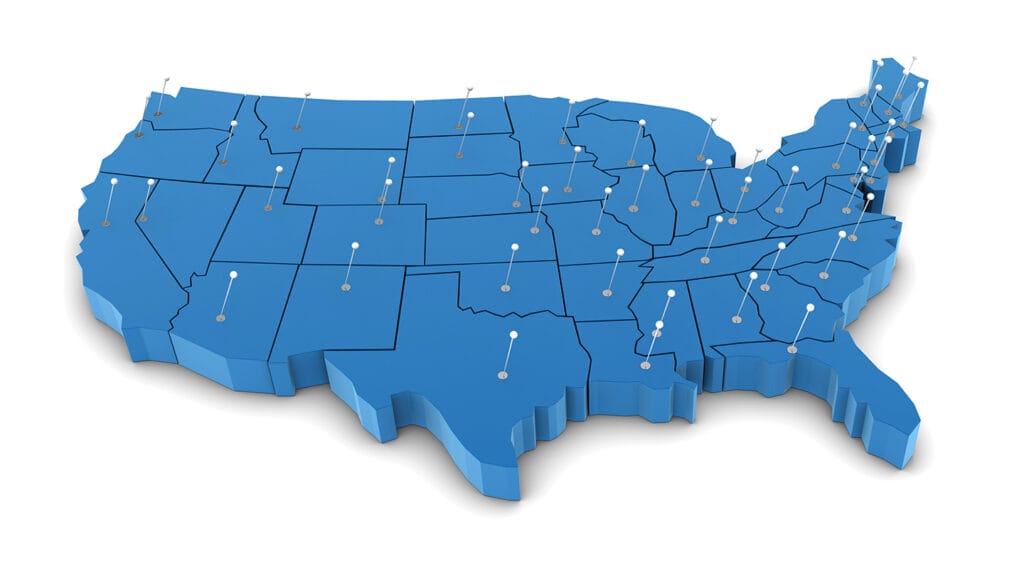Demand for at-home services has increased exponentially because of the COVID-19 pandemic. In fact, home care could account for as much as 25% of the total cost of care by 2025. Given the rapid growth, home care agencies must find ways to contend with rising demand for their services amid a caregiver shortfall that is estimated to be nearly 7.4 million through 2029. Technology may be able to help.
Technological innovation is increasingly playing a more critical role in helping organizations become more efficient, enhance their communications and streamline their data collection and regulatory compliance capabilities so they can ensure consistent quality and ongoing effectiveness of the care they provide.
Driving efficiency and caregiver job satisfaction
Staffing shortages, heavy workloads and unreasonable documentation requirements are just a few of the causes of stress and burnout reported by home care workers. Technology can go a long way in addressing these problems, easing workload burdens and making processes more efficient to help retain caregivers, deliver greater job satisfaction and potentially encourage more to enter the profession.
For example, there are platforms that can replace manual billing and payroll, connecting payers and providers in real time to streamline and accelerate the process of scheduling the right caregiver for each patient. Additionally, scheduling solutions built on intelligent algorithms can empower providers to quickly and seamlessly fill shifts, using broadcast technology to automatically alert caregivers about open shifts, upcoming appointment times, and other changes. This approach can save time and effort, compared to the traditional way of doing things, which included countless phone calls and emails to finalize schedules.
Mobile apps are another tool that are ideally suited for homecare workers. Since they’re always on the go and rarely in an office, caregivers can use mobile apps to do a variety of tasks, including clocking in and out for the day, maintaining their shift schedule, communicating with their agency, and completing in-service training.
A technological focus on improving health outcomes in home care
Technology is not only important to the caregiver, it’s also vital to those receiving care. Adding intelligent monitoring into existing processes can support real-time access to patient vitals and alerts to changes in a patient’s condition when a caregiver isn’t present. Additionally, caregivers often see factors — such as social determinants of health — that impact patients’ conditions beyond the medical care being delivered.
Technology can help caregivers become an active part of the care coordination team and enable them to provide awareness of factors beyond just blood sugar or blood pressure that impact the health of their patients. By collecting and communicating timely clinical and non-clinical observations, care teams have an opportunity to reduce adverse and costly events, such as emergency room visits, and admissions to the hospital or skilled nursing facilities, which saves money while delivering better outcomes. Compilation of this data also supports member population health analytics, offering providers insights into common denominators among patients and suggesting changes that can make care more effective.
Complying with regulations in healthcare
Congress enacted the 21st Century Cures Act to, in part, decrease fraud, waste and abuse in the healthcare system, and to help bring innovations and medical advances faster to the Medicaid participants who need them. Specifically, the Cures Act requires states to implement Electronic Visit Verification (EVV) for home healthcare services that require an in-home visit by Jan. 1, 2023. States that do not implement EVV will receive reduced federal Medicaid funding.
Such regulations add more administrative work for already busy providers, so implementing robust solutions to drive compliance with EVV rules are a must. The Cures Act necessitates that all home visits are electronically verified for the type, date and location of service performed; the individual receiving the service; the caregiver or aide performing the service; and the time the service begins and ends.
EVV introduces a new level of accountability and transparency for providers and payers. And the information gathered during the process is used to document visit notes and ensure care plan compliance. EVV tools also can provide real-time notifications of missed visits, allowing faster rescheduling of replacement caregivers. And by interfacing directly with billing and payroll solutions and aggregators, EVV can streamline processes, resulting in timely billing and more accurate reimbursements.
Leveraging new platforms and digital tools to streamline processes within billing, payroll, compliance, scheduling and more delivers added benefits to home care providers. Implemented correctly, they compensate for staffing shortages by automating tasks that don’t require manual work, and in turn, reduce staff burnout from repetitive and time-consuming administrative tasks.
Demand for home care is not waning anytime soon, and technology is a foundation that’s helping transform the industry for the future. By adopting innovative solutions, homecare organizations can not only address federal and state regulations with ease, they can also empower caregivers to offer the best possible care and improve health outcomes.
Stephen Vaccaro serves as president at HHAeXchange, where he leads the market strategy and national expansion of HHAeXchange’s state, payer, provider and fiscal intermediary portfolios. With more than 30 years of leadership experience in the healthcare industry, he has spent time on both the payer and provider sides of the market. He has a proven track record of success in executive leadership, sales, service delivery, strategic planning, project management, P&L management, product development and acquisition integration.



